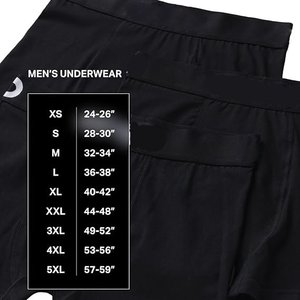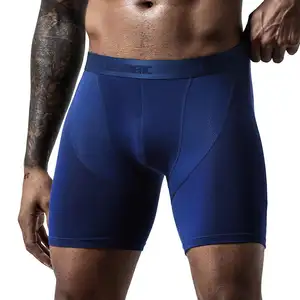(117324 products available)







































































































































































































































Underwear factories are highly specialized institutions that focus solely on the production of various types of intimate apparel. These garments range from bras and panties to more complex items like shapewear and lingerie. Each category necessitates unique materials, designs, and production techniques that cater to specific requirements of comfort, functionality, and style. Here are some of the main types of underwear factories and what they specialize in:
Seamless Underwear
Seamless underwear is a type of undergarment that is made without any seams or stitching. This design reduces the risk of chafing and irritation, providing a smooth and comfortable fit that is virtually invisible under clothing. Seamless underwear is typically made from stretchy, form-fitting fabrics like nylon, spandex, or a blend of both. These materials conform to the body's shape and move with the wearer, offering a comfortable and discreet option for everyday use.
Lingerie
Underwear factories that specialize in lingerie produce a wide range of products, including bras, panties, camisoles, babydolls, and chemises. These items are often made from delicate and luxurious fabrics such as lace, silk, satin, and chiffon. Lingerie production requires meticulous attention to detail, especially in areas like embroidery, lace insertion, and garment construction. Many lingerie items also feature intricate detailing like bows, ribbons, and jewel accents that add to their aesthetic appeal.
Shapewear
Shapewear underwear factories focus on producing garments designed to smooth and shape the body's silhouette. These products include camisoles, bodysuits, slips, and high-waisted panties, all designed to target specific areas like the tummy, thighs, and hips. Shapewear is typically made from firm yet stretchy materials like spandex or elastane blends that provide comfortable support while allowing for ease of movement. The production process often involves advanced knitting and bonding techniques to ensure the garments offer seamless and invisible wear under clothing.
Activewear Underwear
Activewear underwear factories specialize in producing undergarments designed for athletic and active use. These products include moisture-wicking and breathable panties, sports bras, and compression shorts. The materials used in activewear underwear often include blends of polyester, nylon, and spandex, which provide moisture management, stretch, and durability. These factories focus on creating garments that offer support, comfort, and flexibility to enhance performance during physical activities.
Organic and Eco-Friendly Underwear
These factories prioritize sustainability and ethical production practices in their underwear manufacturing. They often use organic cotton, bamboo, hemp, and recycled materials to create environmentally friendly products. The production process may also involve low-impact dyeing techniques and fair labor practices to minimize the ecological footprint and promote social responsibility. These underwear factories cater to consumers seeking sustainable and eco-conscious alternatives to traditional underwear.
Men's Underwear
These factories focus on producing a variety of men's underwear styles, including briefs, boxers, boxer briefs, and trunks. Each style offers different levels of coverage and support, catering to individual preferences. Men's underwear is typically made from comfortable fabrics like cotton, modal, and microfiber, often blended with elastane for added stretch. The production process involves precise cutting and stitching techniques to ensure a comfortable fit that accommodates the body's movement.
Underwear factories are highly developed and specialized production facilities focused on creating a variety of underwear items. This includes everything from bras and panties to long johns and boxers. They are characterized by a range of advanced technologies and design processes that ensure efficiency, quality, and the ability to meet consumer demands. Here are some key aspects of underwear factory designs:
Modular Production Lines
Production lines in an underwear factory are often modular. This means they can be easily reconfigured. This flexibility allows the factory to quickly adapt to new products or changes in production volume. Each module is designed to carry out a specific task. This could be cutting fabric, sewing seams, or adding elastic bands. The modular nature of the design allows for efficient workflow and quick setup changes.
Automated Cutting Systems
Cutting fabric is one of the first steps in making underwear. Automated cutting systems use advanced technology to lay multiple layers of fabric flat. Then, they cut them with precision using lasers or automated blades. This system reduces waste by optimizing the layout of pattern pieces. It also speeds up the cutting process, ensuring consistent and accurate fabric pieces for the next assembly stages.
Sewing Stations
Underwear production involves many sewing tasks. Each task requires a specific type of industrial sewing machine. These machines are often arranged in a flow that mirrors the assembly process of the underwear. From attaching elastic to stitching seams and adding closures. Some factories use automated sewing robots for simple tasks. However, many tasks still require skilled workers due to the intricacies of underwear construction.
Quality Control Areas
Quality control is critical in underwear production. There are designated areas in the factory where trained personnel inspect finished products. They check for defects in stitching, fabric quality, and overall construction. Statistical process control methods are often used to monitor production processes and ensure consistent quality across batches.
Fabric and Material Storage
Before production begins, an underwear factory must store various fabrics and materials. This includes cotton, lace, and synthetic blends. These materials are stored in controlled environments to maintain quality. The factory design includes efficient storage systems that allow quick access to different materials as needed throughout the production process.
Assembly and Packaging Areas
Once the underwear is assembled, it moves to packaging. This area is designed for efficient packing and labeling of products. Often, they use automated systems to assist in sorting and packing. Afterward, they prepare products for shipment to retailers or direct consumers.
Research and Development Facilities
Innovation is key in the underwear market. Research and development facilities are a part of the factory design. They focus on creating new products and improving existing ones. This area includes testing labs where prototypes are tested for comfort, fit, and durability using various tools and techniques.
Underwear can be worn in different ways, and matching it with the right clothes makes a person comfortable and boosts their confidence. Here are some tips on how to wear and match underwear with clothes:
How to Wear Underwear
Wearing underwear is usually straightforward. The wearer should select a type that meets their needs and preferences. For instance, one may choose a bra that provides sufficient support or opt for seamless panties that will not show lines under clothes. Put the underwear on, adjusting it so it feels comfortable. For bras, ensure the straps are even and the band fits snugly around the body. For seamless underwear, consider styles like thongs or boy shorts, which offer coverage and comfort. Always check the fit and comfort of the underwear throughout the day, making any necessary adjustments. Remember to change underwear daily for hygiene purposes and to select styles that suit different occasions, whether they are for work, exercise, or special events. This enhances comfort and confidence throughout the day.
How to Match Underwear to Your Outfit
Matching underwear to an outfit requires considering the style and fabric of the outerwear. Choose bras that offer sufficient support and are smooth under tight-fitting tops. Seamless bras and panties are ideal for this purpose, as they do not create visible lines. For sheer or form-fitting clothes, consider nude or seamless underwear to avoid visible panty lines and bra outlines. Thongs and boy shorts are excellent choices for a seamless appearance. If the outerwear is low-cut or sheer, opt for a plunge bra or adhesive bras that provide invisible support. Color coordination is also important; select underwear in shades that complement or contrast with the colors of the outfit. This ensures a cohesive look. For lighter fabrics, opt for light-colored underwear to prevent them from being seen. For darker clothes, darker underwear is usually more flattering and discreet.
Q1: What types of underwear do women wear?
A1: Women wear different types of underwear. These include briefs, which are the most common; thongs, which have minimal rear coverage; hipsters, which sit lower on the hips; bikinis, which are a balanced mix between briefs and bikinis; and boyshorts, which offer more coverage and resemble shorts. Each type serves distinct purposes regarding comfort, coverage, and suitability for different outfits.
Q2: What is the importance of comfortable underwear for women?
A2: Comfortable underwear is crucial for women as it impacts their overall comfort and confidence daily. Well-fitting and suitable underwear can prevent discomfort, chafing, and irritation, thus enhancing a woman's focus and productivity. It also plays a significant role in maintaining hygiene and can boost confidence by providing a flattering fit and support.
Q3: Why do women prefer seamless underwear?
A3: Women prefer seamless underwear because it offers a smooth and invisible look under tight or sheer clothing, eliminating visible panty lines. Seamless designs also enhance comfort by reducing the likelihood of chafing and irritation caused by seams. Moreover, seamless underwear often features a flattering fit and a more versatile design, making it a practical choice for everyday wear and special occasions.
Q4: How do women choose the right underwear for their outfits?
A4: Choosing the right underwear involves considering the type of outfit one wears. For form-fitting clothes, seamless or thong underwear can prevent visible panty lines. High-waisted styles work well with high-waisted pants or skirts, while bras with convertible straps offer versatility for different top styles. It's also essential to select underwear made from breathable fabrics like cotton for comfort and hygiene. Understanding one's body shape and the cut of different underwear styles helps in selecting ones that offer the best fit and support for specific outfits.